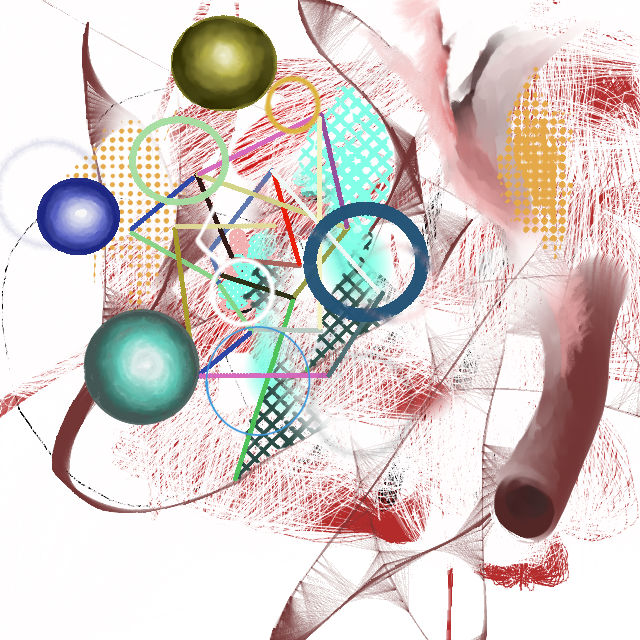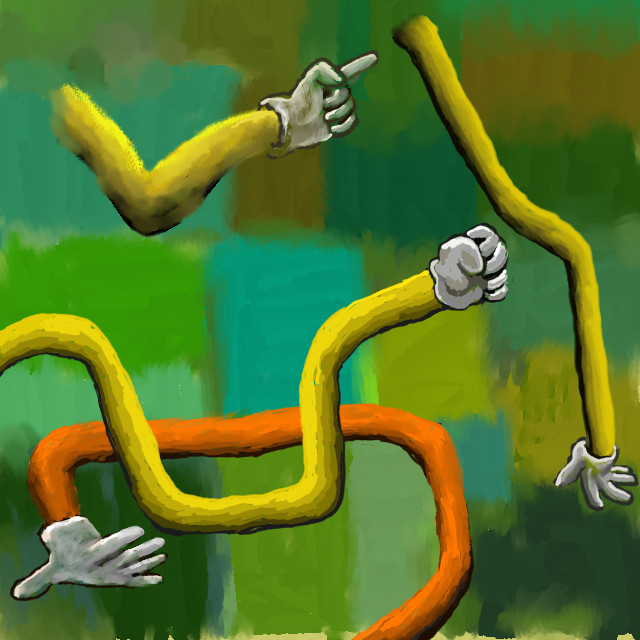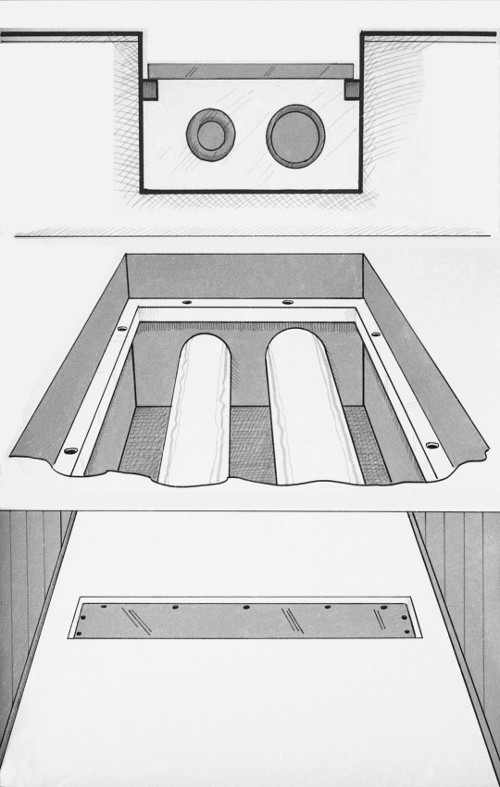
Drawn with Linux MyPaint and Krita
After a couple of years of complaints, the Feedly RSS reader added an email login option, so you no longer have to use Google to access the product.
My list of RSS readers has been updated to reflect this improvement.
Please add the tommoody.us feed to a reader on that list, if you haven't already, and thumb your nose at "Big Social."
(I can actually remember a time when I complained about RSS because it streamlined all the personal quirks out of individual blogs. I mentioned this recently to a honcho at an "art and technology" website and he said, "wait -- you were blogging before RSS?")

Drawn with Linux MyPaint. This is based on a dream, not of arms but of a painting that looked like this. In the dream there were more arms and they were more geometric, but they were hovering over a field of green squares.
In 2009, The Distributed Gallery in Los Angeles printed a small book to accompany my show there.
A PDF version was posted by Sean Dockray, who ran the gallery. This disappeared for awhile but Dockray has reposted it. [Update, Nov. 2020: The e-rat.org links disappeared again.] As an experiment/learning adventure I converted the PDF to epub using Sigil. I've attempted to contact Dockray a few times but as of yet this epub isn't "official." I'm posting it as personal documentation and giving full credits to Dockray and others, as shown in the front matter of the book.
Some notes on the epub conversion:
Calibre converts the PDF to epub, consisting of an HTML file and images. Editing the HTML and CSS is very similar to a working on web pages. Sigil has a WYSIWYG editor that can be used for this. I broke the single large HTML file into sections to facilitate creating a table of contents. Sigil generates the ToC automatically and that file can be edited separately.
The only thing really laborious was the images. I sized them at 600 pixels wide and added captions as part of the image. This required making screenshots and finding the right font size to be legible in an e-reader.
To test the epub I viewed it in Calibre, in a Kobo e-reader, and in Adobe Digital Editions. Calibre converts the epub to .mobi without any hitches, but it makes the images resizable in a way I don't care for much, so I'm not posting a mobi version.
Some notes on the book:
The interviews and selected blog commentary reflect a certain status quo at the end of the blogosphere era, before the complete hegemony of Facebook as a place for artists. :(
Much of the discussion centers on "showing the blog in the gallery" and "showing GIFs in the gallery," ideas that were later picked up and/or repackaged by others under the banner of so-called post-internet art. It's kind of a time capsule, even though I'm still doing most of the same things online and in galleries. The main improvement I have to report is that a used Amazon Fire tablet makes a much better GIF display device than burning DVDs.

From my distant past, this image, digitally reconstructed from an old photo negative.
A law student friend needed a jury exhibit for a mock trial. In the case, a supermarket shopper rolled her cart over a steel plate in a shopping lane, upsetting the cart and causing personal injury. The plate covered pipes in the floor, and was not bolted down but rested on an inner lip of metal.
The negligence suit hinged on such factors as (i) whether a warning sign should have been placed in the aisle, (ii) whether the plate had the appearance of solidity, and (iii) whether a prudent shopper would have proceeded to roll a cart across the plate.
I made this "jury visualization aid" with ink and zip-a-tone on a large piece of illustration board. I watched the trial from the spectator seats, and when this drawing was pulled out and placed before the jury, the professor monitoring the proceedings exclaimed, "that looks like something from a modern art exhibit."
In real life, an insurer would probably have settled the case. This exhibit was ultimately not very helpful to either the plaintiff or the defense, and it's a measure of its ambiguity that I can't recall which side I was supposed to be be assisting, or who prevailed. The top two panels make the steel plate's placement appear precarious, undermining the more solid impression in the bottom panel.